Last updated on
Discover the intriguing reasons behind that mysterious creaking sound from your couch as you delve into this informative article.
Have you ever settled into your couch, only to be met with an unwelcome chorus of creaks and groans? It can be a frustrating experience, especially when you’re trying to relax or entertain guests. But have no fear – you’re not alone in this struggle.
In fact, many people wonder why their couches creak in the first place. Is it a sign of poor quality? Is there anything that can be done to fix it? In this article, we’ll explore the reasons why a couch might creak and provide some tips on how to address the issue.
So sit back (quietly), grab a cup of tea, and let’s get started!
Key takeaways:
- Couch Structure: Solid frame, springs, and cushions ensure durability.
- Types of Couch Materials: Leather, fabric, microfiber, velvet, synthetic blends.
- Impact of Couch Materials: Some materials are more prone to wear and tear.
- Age and Couch Creaking: Wear and tear on components cause creaking.
- Weight Distribution: Uneven wear can lead to creaking sounds.
Table of Contents
Couch Structure
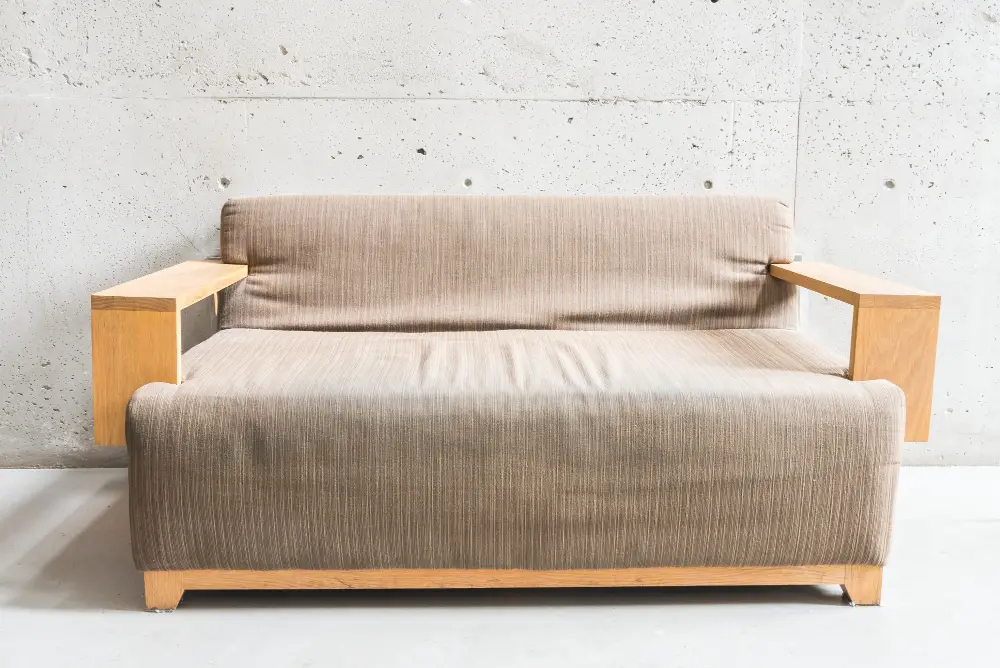
Couch Structure: The structure of a couch is one of the most important factors that determine its durability and comfort. The frame, springs, and cushions all work together to create a sturdy foundation for your seating.
A well-constructed couch will have a solid wood or metal frame that can support the weight of multiple people without bending or breaking.
When shopping for a new couch, it’s essential to pay attention to the materials used in its construction. Look for hardwood frames made from oak or maple rather than softwoods like pine which are more prone to warping over time.
Consider how many springs are used in the seat cushioning system as this affects both comfort and longevity. High-quality sofas typically use eight-way hand-tied coil springs while lower-end models may use zigzag sinuous wire systems instead.
Types of Couch Materials
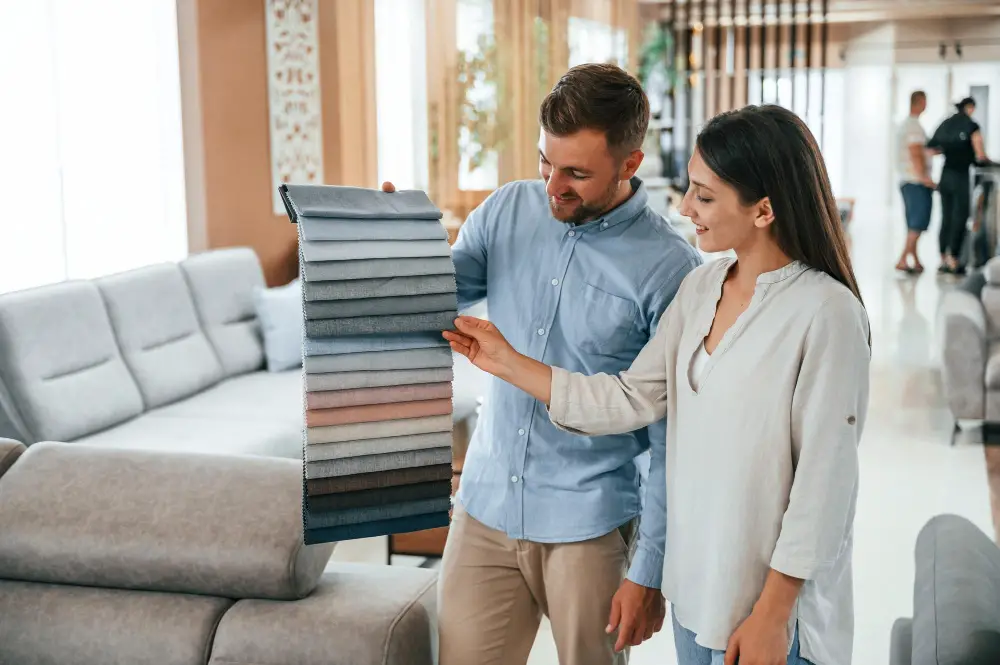
Some common materials include leather, fabric, microfiber, velvet, and synthetic blends. Leather is known for its durability but requires regular maintenance to prevent cracking or fading over time.
Fabric is versatile and comes in many colors and patterns but may not be as durable as other options.
Microfiber is an affordable option that resists stains well but may not hold up against heavy use over time. Velvet adds elegance to any room with its soft texture but can be difficult to clean if spills occur.
Synthetic blends are often used in modern furniture designs due to their affordability and versatility.
When choosing the material for your couch, consider factors such as comfort level, ease of cleaning/maintenance required based on usage frequency/conditions (e.g., pets), style preferences (color/pattern), budget constraints among others.
Impact of Couch Materials
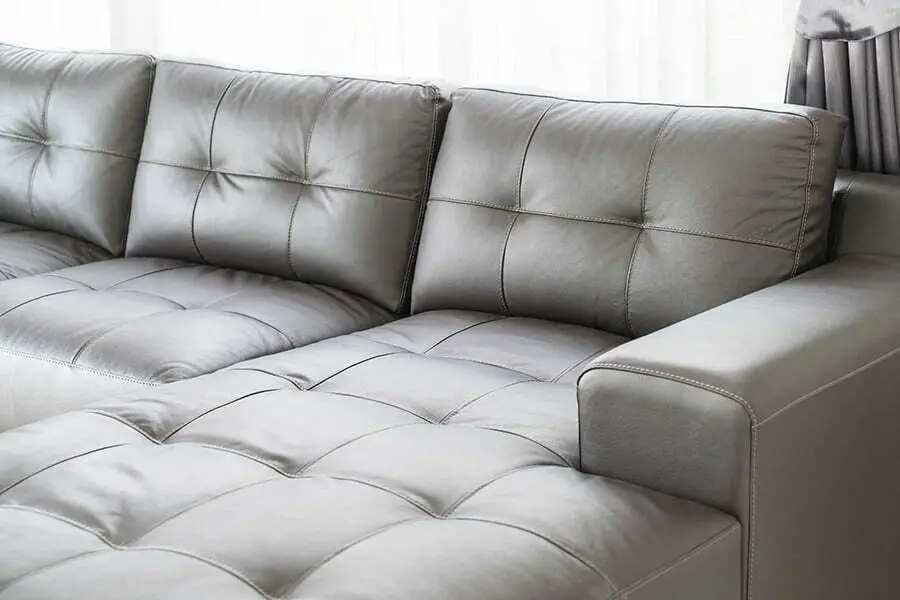
Some materials are more prone to wear and tear than others, which can lead to creaking over time. For example, leather is known for being durable and long-lasting, but it may also stretch or crack with age if not properly cared for.
On the other hand, fabric upholstery may be more susceptible to stains or tears but can often be replaced easily.
The type of filling used in cushions can affect how much weight they bear before losing their shape or supportiveness. Foam fillings tend to compress over time while down feathers provide less structure from the start.
Age and Couch Creaking

Over time, wear and tear on the various components of your sofa can cause it to become less stable and more prone to making noise. This is especially true for older couches that have been subjected to years of use.
One common issue that arises with aging sofas is weakened support springs. These are the coils or wires that provide structure and cushioning beneath your cushions.
As they begin to lose their shape over time, they may start producing creaks when you sit down or shift positions on the couch.
Another factor related to age is cushion compression – this occurs when foam fillings inside cushions lose their firmness due to prolonged use or exposure from sunlight/heat sources etc., causing them not only sag but also produce unwanted sounds as you move around while sitting.
Weight Distribution

If you tend to sit in the same spot every time, or if one side of the couch is used more frequently than the other, it can cause uneven wear and tear. This can lead to creaking sounds as certain parts of the couch become worn down over time.
To avoid this issue, try to distribute weight evenly across your couch. Encourage family members and guests to switch up their seating positions regularly so that no one area becomes overly worn down.
Another factor that affects weight distribution is how much weight your sofa was designed for in general. Overloading a sofa with too much bodyweight will put undue stress on its structure leading it towards damage and eventually causing unwanted noise while sitting or moving around.
Loose or Broken Springs
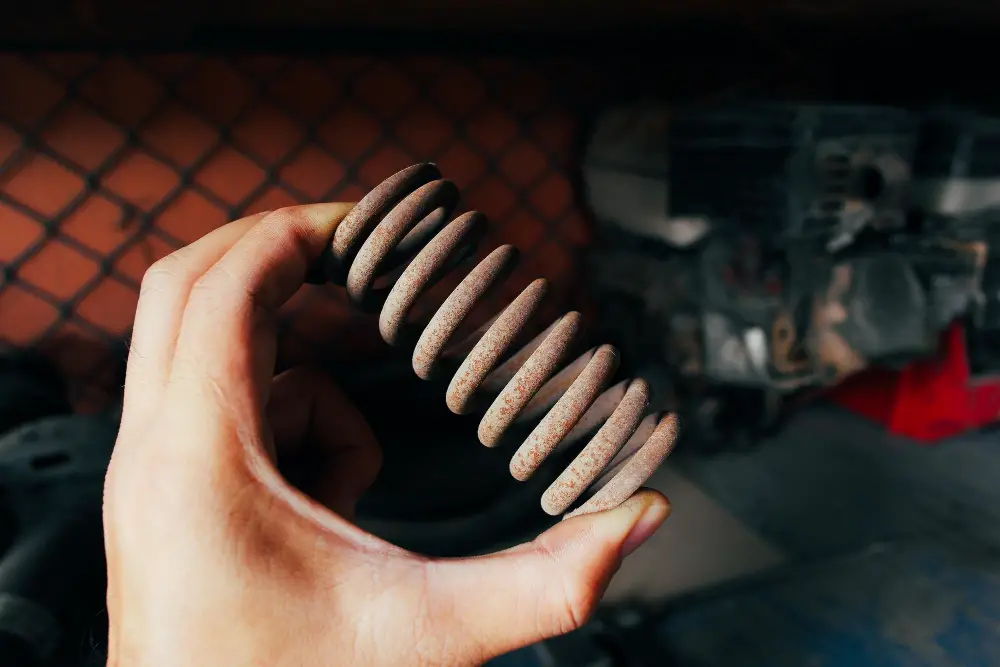
Over time, the springs in your couch can become worn out and lose their tension, causing them to sag and make noise when you sit down. If one of the springs breaks completely, it can cause an uneven distribution of weight on your couch which leads to more creaking.
If you suspect that loose or broken springs are causing your couch to creak, there are a few things you can do. First off all check under the sofa cushions for any visible signs of damage such as rusted metal parts or stretched-out coils.
If everything looks fine but still hear noises coming from inside then try bouncing up and down on different areas around where people usually sit until find where sound comes from.
Weakened Support Springs
Over time, these springs can become worn out or damaged, leading to an uneven distribution of weight and pressure on the frame. This can cause the couch to sag in certain areas and produce that annoying creaking sound.
If you suspect that weakened support springs are causing your couch to creak, there are a few things you can do. First, try flipping over your cushions and see if this helps redistribute weight more evenly across the frame.
If this doesn’t work, it may be time to replace some or all of your support springs.
Replacing these parts yourself is possible but requires some technical knowledge about furniture repair; otherwise seeking professional help would be best advised as they have experience with such repairs.
Damaged Frame
Over time, the wooden frame can become weakened due to wear and tear or exposure to moisture. This can lead to cracks or splits in the wood, which causes it to shift and move when weight is applied.
If you suspect that your couch’s frame may be damaged, there are a few things you can do. First, inspect the visible parts of the frame for any signs of cracking or splitting.
If you notice anything suspicious, try gently pressing on those areas while someone else sits on the couch – this will help determine if there’s any movement in that part of the structure.
If your suspicions are confirmed and there is indeed damage present in your sofa’s framework; then it might be best left up for professional repair work as they have specialized tools required for such repairs.
Faulty Frame Issues

Over time, the wooden frame can become weakened or damaged due to wear and tear, causing it to shift and make noise when weight is applied. This issue can be exacerbated by poor quality materials or improper construction techniques during manufacturing.
If you suspect that your couch’s frame may be at fault, there are several signs to look out for. These include visible cracks in the wood, wobbling legs or arms, and uneven weight distribution across different parts of the sofa.
To address this issue effectively, it’s essential to identify which part of the frame is causing problems first. If you’re handy with tools and have some DIY experience under your belt – tightening screws on loose joints might help fix minor issues temporarily; however major repairs should always be left up to professionals who know how best handle such situations without further damaging your furniture piece.
Wood Joints and Glue
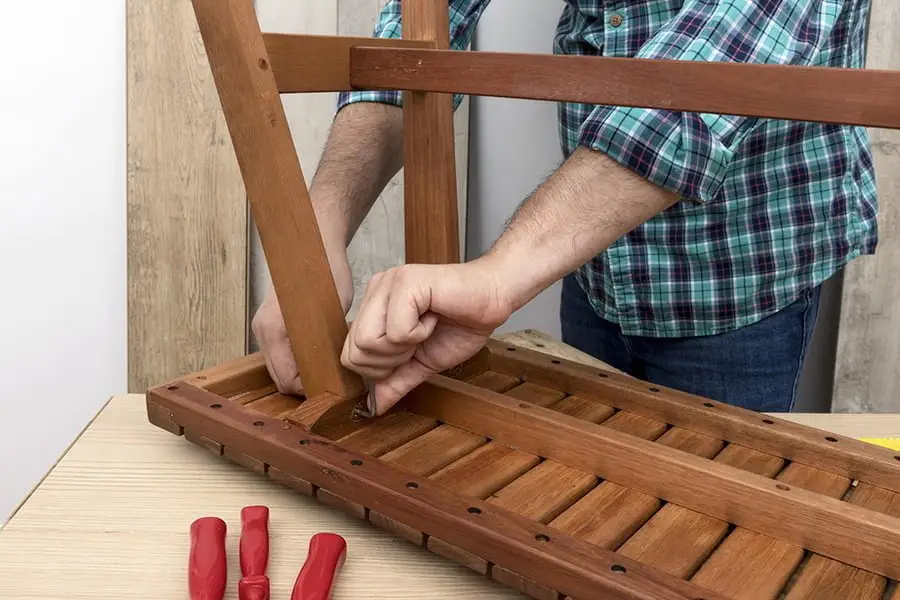
They hold the frame together, ensuring that it can support weight and withstand movement. However, over time, these joints may become loose or damaged due to wear and tear.
This can cause creaking sounds when you sit on your couch.
One common issue is with the glue used in wood joints. If the glue dries out or becomes brittle over time, it may no longer be able to hold the joint firmly in place.
As a result, even slight movements can cause creaks.
To address this issue, you’ll need to re-glue any loose or damaged wood joints using high-quality woodworking adhesive (such as PVA). Be sure to clean off any old glue residue before applying new adhesive for optimal results.
Loose Fittings and Joints
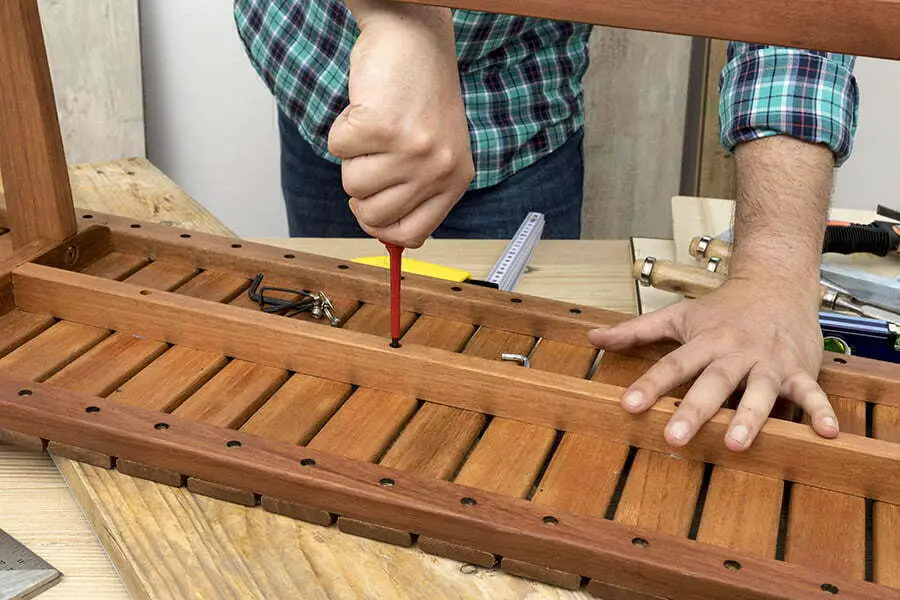
Over time, the screws and bolts that hold your couch together can become loose due to regular use or even just from settling into place. This can lead to a wobbly frame or sagging cushions, which in turn causes creaks and groans when weight is applied.
To address this issue, you’ll need to tighten any loose fittings or joints on your couch. Start by flipping the couch over so you have access to its underside.
Use a screwdriver or wrench (depending on what type of fasteners are used) to tighten any screws or bolts that feel loose.
If you’re not comfortable doing this yourself, it’s always best to seek professional help rather than risk damaging your furniture further.
Cushion Compression
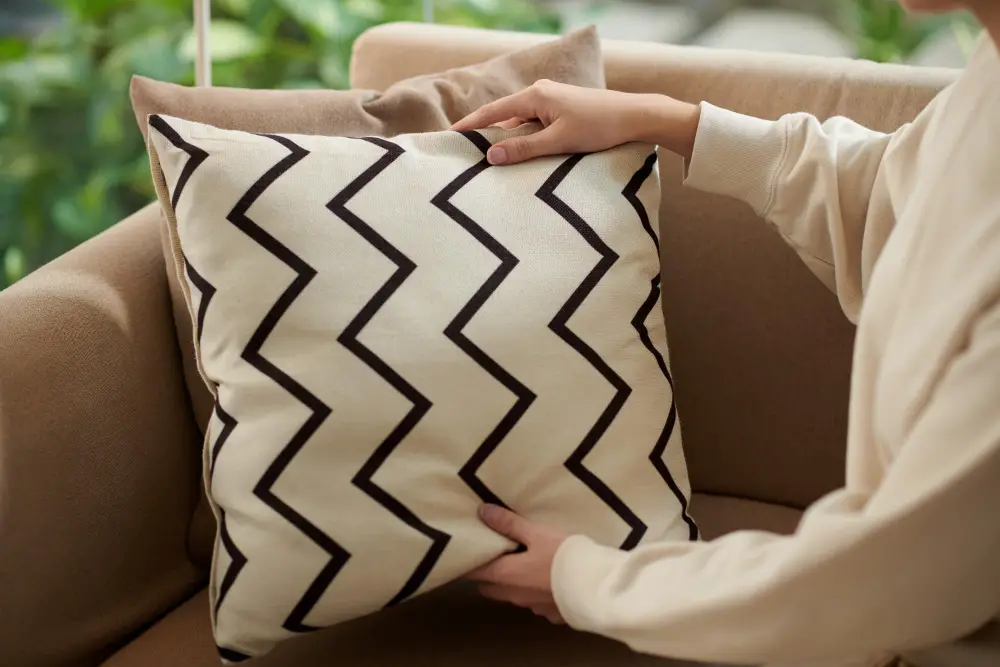
Over time, the cushions on your couch can become compressed and lose their shape, causing them to sink in certain areas. This can put pressure on other parts of the couch, leading to creaking sounds when you sit down or shift your weight.
To prevent cushion compression from happening too quickly, it’s important to rotate and fluff your cushions regularly. You should also avoid sitting in the same spot every time you use your couch – this will help distribute weight more evenly across all of the cushions.
If cushion compression has already occurred and is causing creaking sounds, there are a few things you can do to address it. One option is to replace the foam inside of your cushions with new foam that has a higher density rating – this will help prevent future compression from occurring too quickly.
Another option is simply adding extra padding underneath sagging or compressed areas using materials like plywood boards or additional layers of foam padding.
Worn-out Cushion Fillings

Over time, the foam or batting inside your cushions can become compressed and lose their shape. This can cause uneven weight distribution on your couch, leading to creaks and groans when you sit down.
To address this issue, consider replacing your cushion fillings with new ones. You may also want to invest in high-quality foam or batting that will last longer than cheaper alternatives.
In addition to replacing worn-out cushion fillings, it’s important to regularly fluff and rotate them so they wear evenly over time. By taking care of your cushions properly, you’ll not only reduce the likelihood of a creaky couch but also extend its lifespan overall.
Sagging Couch Support
Over time, the springs and webbing that provide support to your couch can become worn out or damaged, causing it to sag in certain areas. This can lead to uneven weight distribution on the frame and cause creaking sounds when you sit down or move around.
To address this issue, you may need to replace some of the springs or webbing underneath your couch. You could also consider adding additional supports such as plywood boards under cushions for extra reinforcement.
Weak Sofa Legs
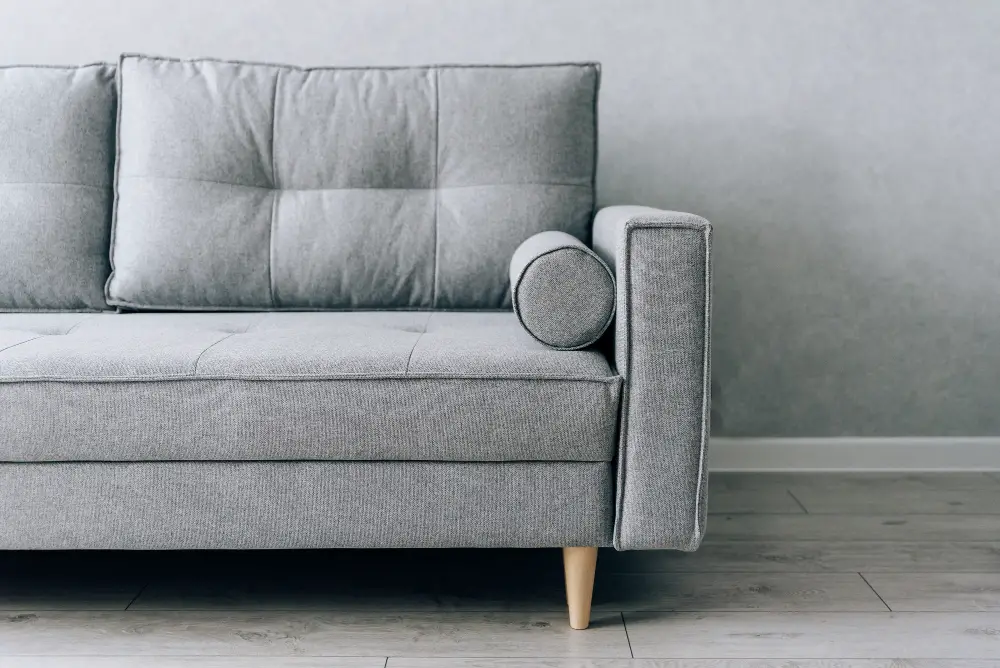
Over time, the legs can become loose or damaged, causing them to wobble and shift under the weight of the couch. This movement can create a creaking sound that’s hard to ignore.
If you suspect that your sofa legs are contributing to your couch’s noise problem, there are a few things you can do. First, check each leg for signs of damage or wear and tear.
If any appear broken or unstable, it may be time to replace them.
You should also make sure that all screws and bolts holding the legs in place are tight and secure. Loose fittings could allow for unwanted movement which will result in more noise from your furniture.
Consider investing in new sofa feet with rubber padding on their bottom surface if they don’t already have it installed as this helps reduce friction between floor surfaces while providing better stability overall.
Upholstery Concerns
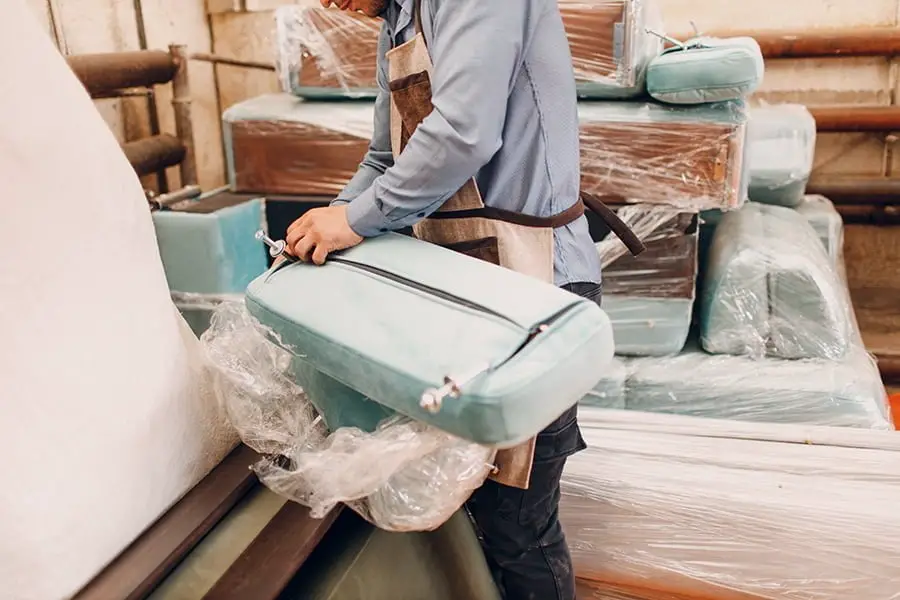
The type of fabric used to cover your couch can affect its durability and longevity. For instance, leather upholstery tends to last longer than other materials like cotton or linen.
However, even with high-quality upholstery material, wear and tear are inevitable over time. As the fabric ages or becomes worn out due to frequent use or spills that were not cleaned up promptly, it may start making creaking noises when you sit on it.
Moreover, if your couch has loose threads or seams that have come apart from regular use over time – this could be another reason for those annoying sounds coming from your furniture piece.
Flooring Interaction With Couch

Hardwood floors, for example, tend to amplify sounds and vibrations more than carpeted floors. This means that even slight movements on a hardwood floor can cause your couch to creak or groan.
To minimize this effect, consider placing an area rug underneath the legs of your couch. The rug will help absorb some of the sound and vibration from foot traffic or other movement on the floor.
If you have recently changed flooring types or moved into a new home with different flooring materials than before, it’s possible that this change could be contributing to increased noise from your furniture. In such cases where changing out furniture is not an option due to budget constraints or personal preference; adding felt pads under each leg may help reduce friction between them and hard surfaces like tile which often causes squeaking noises when rubbed together.
Proper Couch Maintenance
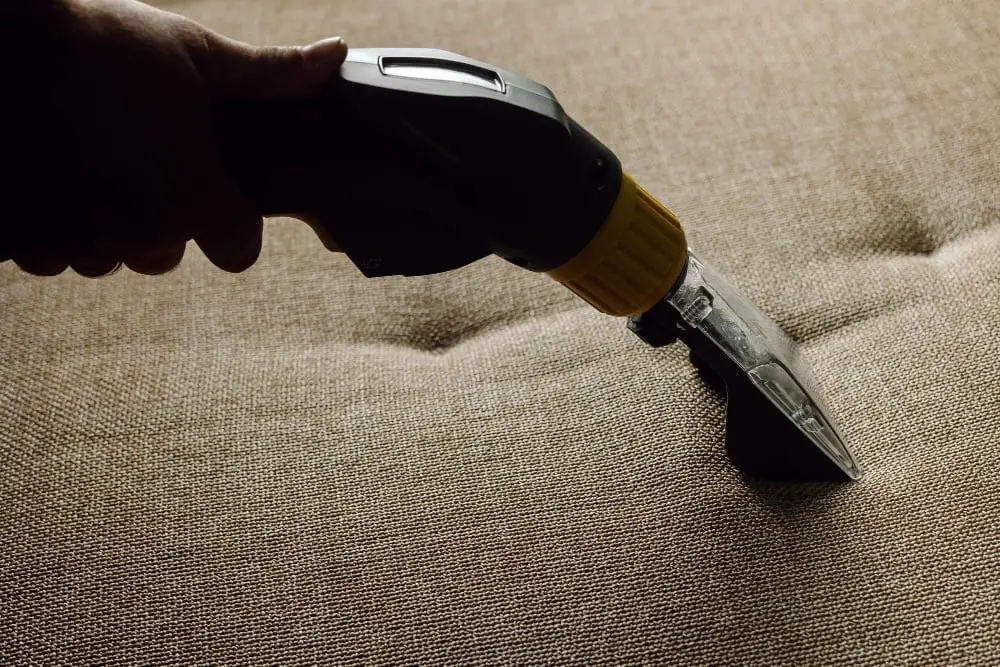
One of the most important things you can do is to maintain your couch properly. This means regularly cleaning and vacuuming it, as well as rotating cushions and fluffing them up to prevent compression.
Another key aspect of proper maintenance is avoiding placing heavy objects on your couch or jumping on it (we know, easier said than done). These actions can put unnecessary stress on its structure and cause damage over time.
It’s also essential to pay attention to any signs that something may be wrong with your couch – such as loose fittings or sagging support – so you can address these issues before they become more serious.
Maintenance Tips & Techniques

One of the most important things you can do is to regularly clean your couch. This includes vacuuming up any crumbs or debris, wiping down spills as soon as they happen, and using a fabric cleaner on stains.
Another key aspect of maintaining your couch is ensuring that it’s properly supported. This means checking for loose fittings and joints, replacing worn-out cushion fillings when necessary, and making sure all springs are in good working order.
If you have hardwood floors beneath your couch (or any other type of hard flooring), consider placing a rug underneath it to help absorb shock from movement. Avoid dragging heavy furniture across these types of floors – instead lift them carefully with another person if possible.
When to Seek Professional Help

A furniture repair specialist can diagnose the issue and provide a solution that will restore your couch’s comfort and functionality. They have access to specialized tools, materials, and expertise that can address even the most complex problems.
It’s important not to ignore persistent creaking sounds from your couch as they could indicate more significant issues with its structure or support system. If left unaddressed for too long, these problems could worsen over time leading to costly repairs or even replacement of the entire piece of furniture.
While some minor squeaks are normal in any piece of furniture due to wear-and-tear over time; if you’re experiencing excessive noise from your sofa on a regular basis then there is likely an underlying problem that needs attention. By following our maintenance tips or seeking professional help when necessary – you’ll be able enjoy many more years of comfortable seating without those annoying creaks!
FAQ
How do you stop a house from creaking?
To stop a house from creaking, use a snap-off screw kit by predrilling a hole in the creaky board and drilling in the specialty screw until it snaps off under the surface.
What are the common reasons for a couch to start creaking?
Common reasons for a couch to start creaking include aging, loose joints or screws, worn-out springs, and uneven weight distribution.
How can you identify and fix the specific component causing the creak in a couch?
Identify and fix the specific component causing the creak in a couch by carefully examining the couch’s frame, springs, and joints for any damage or wear, then tighten loose connections or replace the faulty parts.
Are there any preventive measures to avoid a couch from creaking over time?
To prevent a couch from creaking over time, ensure proper usage, avoid jumping or placing excessive weight on it, and periodically tighten any screws or bolts to maintain its structural integrity.





